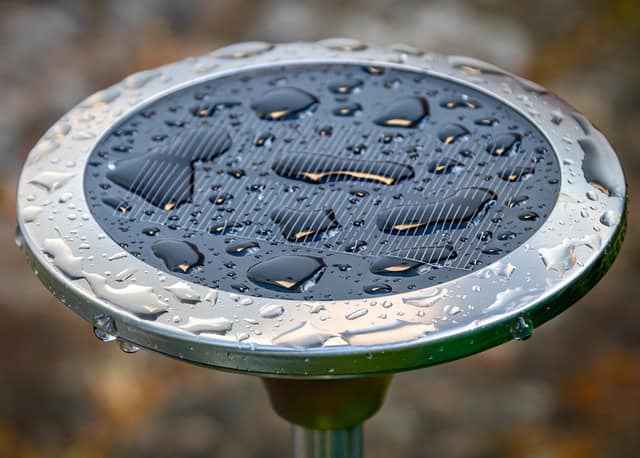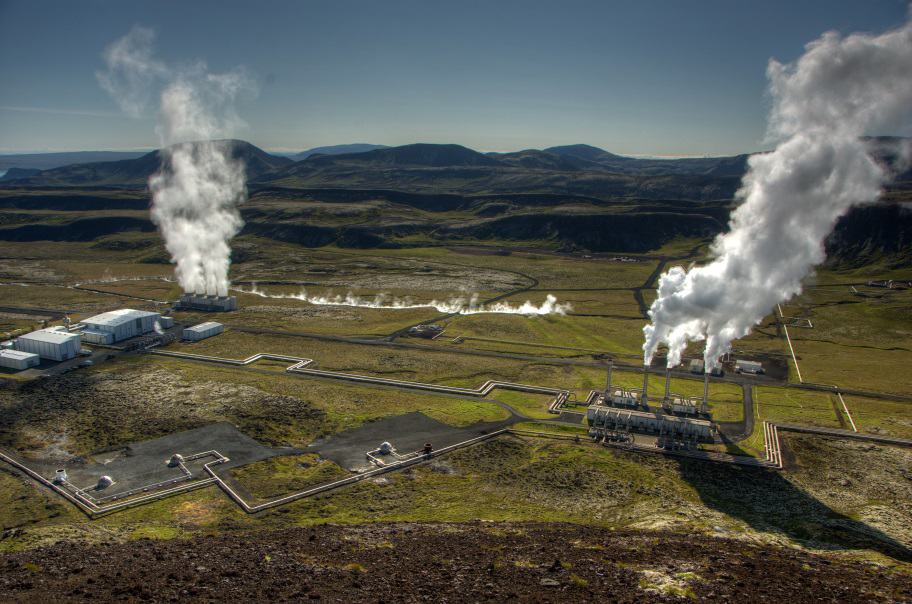Weather conditions are not constant as they vary across the year. The weather conditions might be sunny, cloudy, or rainy. Solar panels definitely work in the rain.
Whenever there is an adequate amount of solar radiation reaching the solar panels, they will generate power. Apart from that solar panels also produce a small amount of energy on cool evenings from the light of the moon and stars.
The good news is that your sun oriented PV boards will in any instance produce even in rainy and cloudy periods. Solar panels installed on your rooftops can utilize direct or indirect daylight.
However, they are best when they get immediate daylight. On dark or stormy days, photovoltaic boards can generate energy ranging from 10% to 25% of their normal capacity.
The amount of energy produced will vary depending on the amount of rainfall, and dullness caused by the presence of cloud cover in the sky.
Nevertheless, it is important to take note that rainwater helps your solar panel work more productively because the water washes away any soil, residue or dust which might be stuck on them.
In any case, you live in an area like South Carolina which has a system of feeding your extra generated energy to the grid, the surplus energy created by your panels during bright hours will balance energy that you use around evening time and different occasions when your solar panels are not working at its full limit.
The type of solar panels introduced on your rooftop equally influence how much power they produce during the cloudy or severe climate. Palmetto Solar uses LG solar panels, which are intended to tap a more broad scope of the sunlight based range.
The LG photovoltaic boards deliver the highest productivity levels ever found in the solar panels production industry. This means there is no doubt that your panels will generate power at any time including when it is cloudy or raining.
On bad weather days, when it is raining and cloudy solar panels can produce energy since solar radiation can penetrate through the rain and clouds. The rainfall does not make the air dark hence, in most cases when it is raining there is usually some sunlight being received on the earth.
The solar radiations progressively become more powerful as they hit the solar panels because they have a longer wavelength than the normal sunny day radiations have.
This is how infrared telescopes enable us to see and study the solar and cosmic systems irrespective of the substances in the sky. The photovoltaic boards are made with the ability to bear heavy rainfall, hail, wind, and changes in temperatures from cold to hot for a long time.
Frequently, many people worry about the physical damage that rainfall may cause to the solar panels. However, there is practically no possibility for the solar panels to be damaged by rainfall.
After thorough study and testing in the research facility, this is how solar panels are made. Solar panel manufacturers protect the wires which connect the photovoltaic cells that make the solar panels in a waterproof encapsulant.
What is a waterproof encapsulant? This is an exceptional liquid coating that is made to provide a long-lasting, effective barrier over sensitive materials.
This layer is then placed between solid support sheets, hindrance films, and hardened, strong glass to secure against dampness and other harsh climate situations. The defensive aluminum surrounding is then power fitted around the layers to guarantee the board’s solidness and life span.
In terms of activities, the solar panels are intended to withstand the harsh impacts of a rainstorm without getting all ruined. Before the arrival of solar panels into the market, they had done a complete assessment of how flexible they are under brutal climatic conditions.
Hybrid Solar Panels That Capture Energy From Rain
Scientists have come up with a new design of solar panels which can capture energy from both rain and rain. There is no worry for people living in areas that experience high rainfalls for the better part of the year. This is an innovation that is going to make a great boost in the renewable energy sector.
What Are Hybrid Solar Panels?
Hybrid solar panels are also known as all-weather solar panels. They create power from both the sun and the rain. They are installed on the roof to trap sun radiations during the day. It does not reduce its productivity when it rains.
This is because it also generates energy when it is raining from the force of the falling rains hitting their surface. Despite that during rainy days sunlight is received reduces by 90%, the solar panels still produce an equal amount of energy.
Hybrid solar panels have the ability to outdo the challenges of standard solar panels with triboelectric Nanogenerators which convert rain into power when there is no adequate sunshine.
The nanogenerators are not as effectual as solar cells but they can increase the power created. These new panels provide an opportunity for people who were restricted by their local weather conditions to enjoy green energy production for their use in domestic and business needs.
How Hybrid Solar Panels Were Innovated And How They Work?
Among the numerous attempts to make all-weather solar panels, this was the first successful attempt. Some of the older created designs sandwiched insulation between the solar cells on the bottom and the triboelectric nanogenerator on top.
This causes inefficiency as it blocked too much sunlight from getting to the solar cells hence did not achieve the goal of creating an all-weather solar panel.
The Soochow University in China made a design that had the nanogenerators and solar panels with an equivalent electrode, making a more effective, thinner model that performed well in rain or sunshine. Although it is still in the analysis phase, this model may possibly be accessible by the public in three to five years.
In the innovation process, another team of Chinese researchers has established another all-weather solar panel. This second group was from Yunnan Normal University and the Ocean University of China. They generated a single-layer model.
They assumed that graphene fitted into the upper part of the solar cells would divide the ions of the raindrops into positive and negative. The exchanges between the positive and the negatively charged ions would possibly generate electricity. However this design model is still in the design phase but with improved study, it could be a second alternative.
Who Benefits From Hybrid Solar Panels?
Up to now, the people who live in northern climates experiencing more rainfall than sunlight had to put up with staying without nonrenewable resources for electricity. The good news is that now with hybrid solar panels, anybody in any part of the world can appreciate the advantages of renewable energy.
They will benefit from power generation even after dark thanks to night time.in the future days, hybrid solar panels will be able to generate adequate electricity for households and commerce, hence dropping the use of nonrenewable resources.
If households and businesses produce their own electricity, they will not be paying utility bills reducing the cost of living hence saving a lot of money in a year. In the investment sector, many people may think that solar panels are only significant in hot areas but with hybrid solar panels, they will receive more returns. This is because they will make supplies even to winter areas.
Availability of Hybrid Solar Panels
At present, these hybrid solar panel designs are not all set for home-based and trade use. Scientists are still finding ways to boost their effectiveness during rain and sun periods. Still, the effectiveness of the Soochow University design was 13 percent, making it a possible substitute for standard solar panels.
This is compared to the current solar panels which only translates 10 percent to 15 percent of the sun’s radiation to electricity. This makes the new design already a suitable solution though the researchers desire to develop the technology of collecting rain energy further.
As these solar panels increase in productivity and turn out to be nearer to the perfect hybrid design of electricity making in rain or shine, homes and businesses all over will be able to fit them on their roofs. This will make the future much cleaner and pollution-free as it will do away with nonrenewable sources of energy.
Conclusion
Solar panels can be described to be defined and structured to act on the light produced by the sun directly but also works on the sun’s radiation during the rain seasons though it’s done at a lower frequency and efficiency compared to the sunny days.
REFERENCES:





[…] Actually, the answer to this question is still “yes.” Believe it or not, even heat and light from the stars and the moon can still get through to your panels to get soaked up and stored as […]